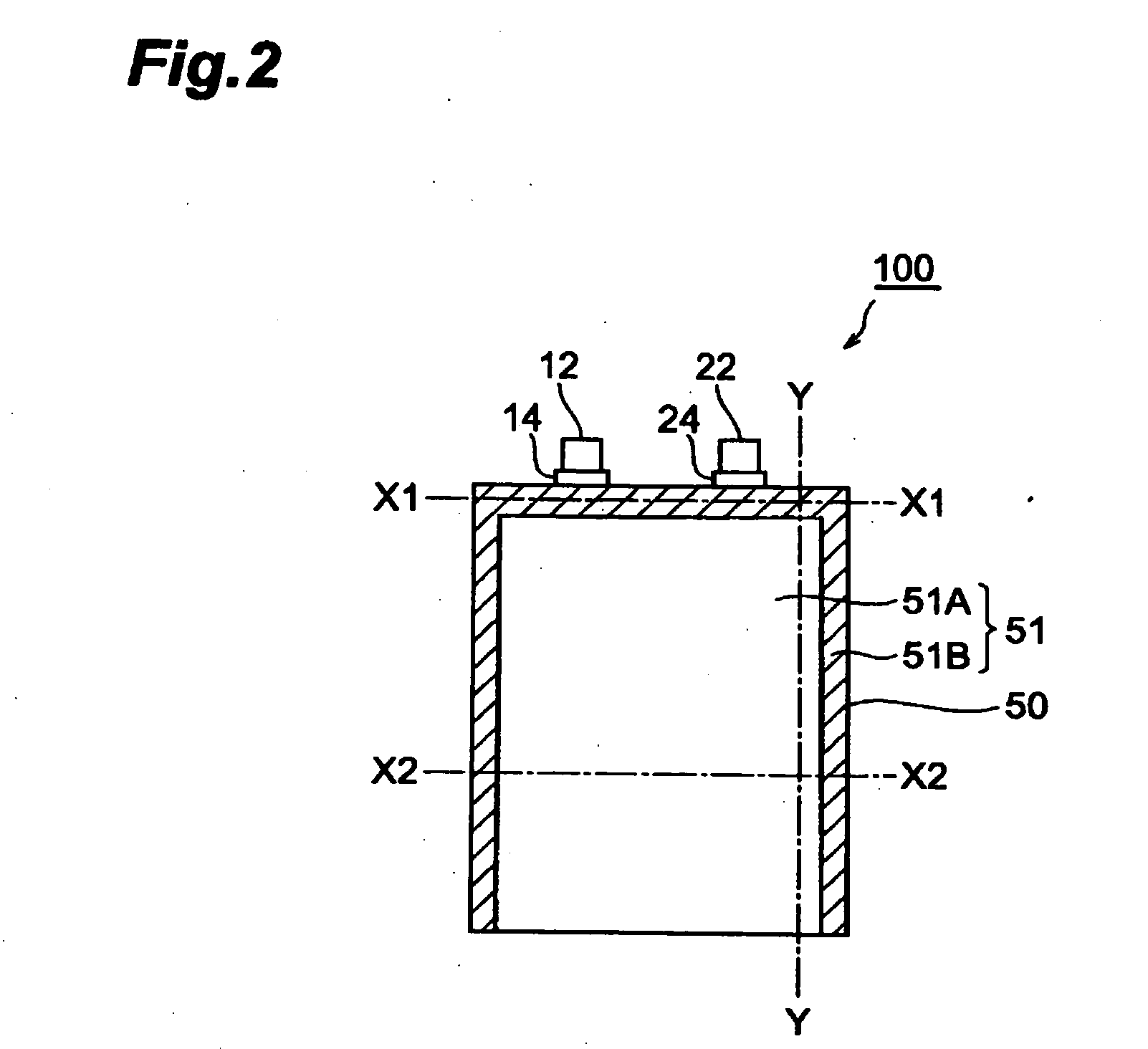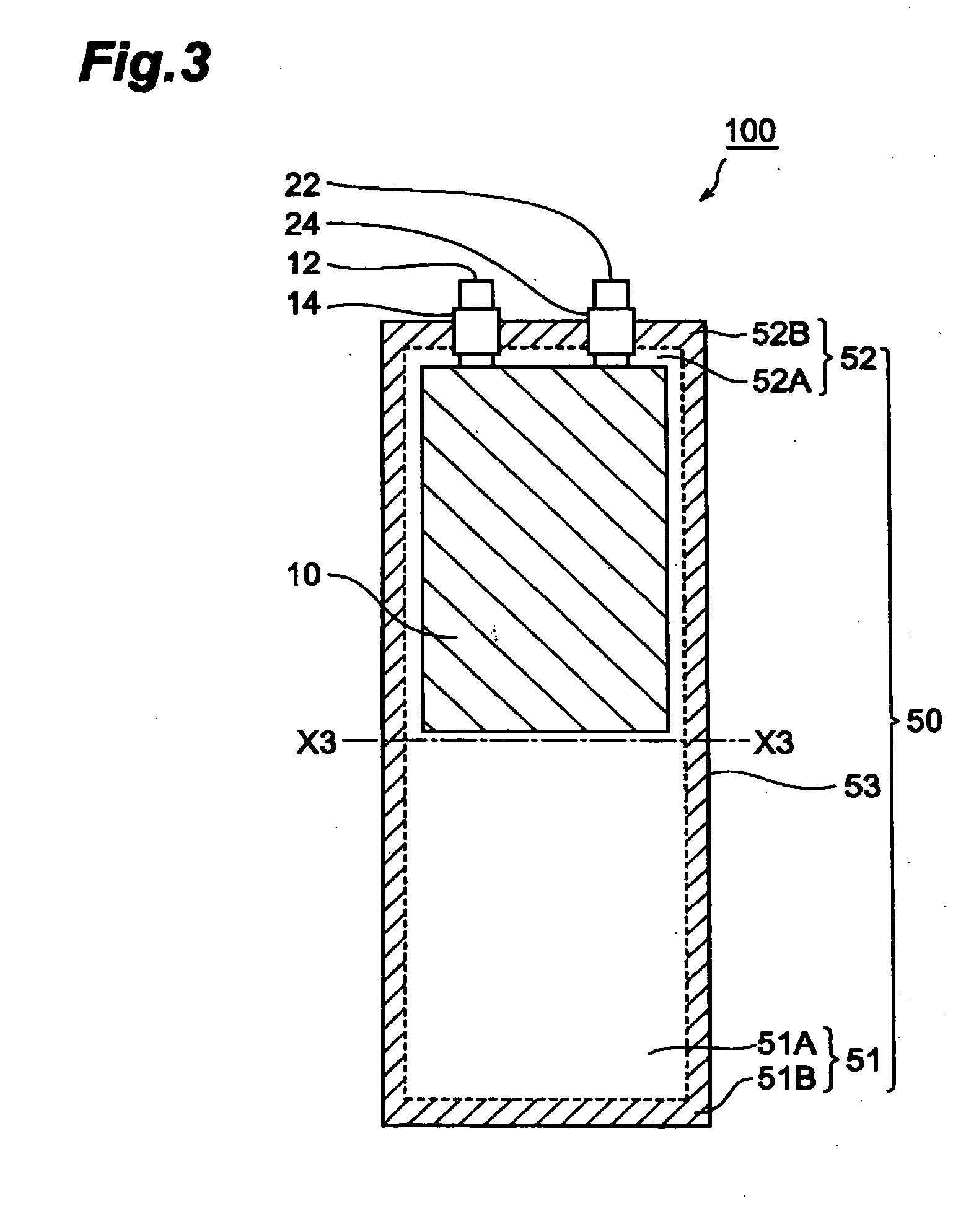Electrode and electrochemical element employing the same
a technology applied in the field of electrochemical elements and electrodes, can solve the problems of low discharge capacity and inadequate energy densities, electrical double layer capacitors provided with electrodes comprising carbon nanotubes, and achieve inadequate electrical double layer capacity and improve electric capacity
- Summary
- Abstract
- Description
- Claims
- Application Information
AI Technical Summary
Benefits of technology
Problems solved by technology
Method used
Image
Examples
examples)
(EXAMPLES)
The present invention will now be explained in greater detail through examples and comparative examples, with the understanding that these examples are in no way limitative on the invention.
Electrodes for Example 1 and Comparative Examples 1 and 2 each having a construction similar to the electrode shown in FIG. 1 were fabricated by the procedure described below.
example 1
(Example 1)
For fabrication of the electrode, first multi wall carbon nanotubes (MWCNT) (12 nm diameter, 100 μm length) (40 parts by weight) and a fluororubber binder (60 parts by weight) were mixed, and methyl isobutyl ketone (MIBK) was added as the solvent to obtain a slurry-like coating solution for formation of the electrode active material-containing layer. The obtained coating solution was coated onto an aluminum foil (20 μm) as the collector using a doctor blade, and was dried at 150° C. The drying was followed by rolling to obtain a carbon nanotube (CNT)-containing electrode (before polymer covering).
The electrode was placed in an electrolytic bath (electrolytic cell) containing an electrolyte solution, and electrolytic polymerization was carried out at 4.4 V (Li / Li+ standard) for 20 minutes while maintaining a constant potential, to obtain an electrode (polymer covered) for Example 1 having an electrode area of 1.77 cm2. The electrolyte solution used was a monomer solutio...
example 2
(Example 2)
A SWCNT-containing electrode (before covering) was obtained in the same manner as Example 1, except that single wall carbon nanotubes (SWCNT) (1.4 nm diameter, 100 μm length) were used instead of the MWCNT of Example 1. The SWCNT-containing electrode was used for electrolytic polymerization in the same manner as Example 1, to obtain an electrode for Example 2 (after covering). The electrode characteristic measurement for Example 2 was conducted with a cutoff voltage of 4.2-2.2 V.
PUM
 Login to View More
Login to View More Abstract
Description
Claims
Application Information
 Login to View More
Login to View More - R&D
- Intellectual Property
- Life Sciences
- Materials
- Tech Scout
- Unparalleled Data Quality
- Higher Quality Content
- 60% Fewer Hallucinations
Browse by: Latest US Patents, China's latest patents, Technical Efficacy Thesaurus, Application Domain, Technology Topic, Popular Technical Reports.
© 2025 PatSnap. All rights reserved.Legal|Privacy policy|Modern Slavery Act Transparency Statement|Sitemap|About US| Contact US: help@patsnap.com



